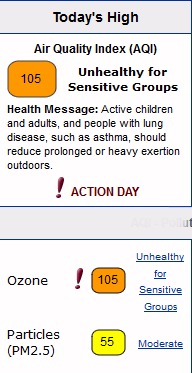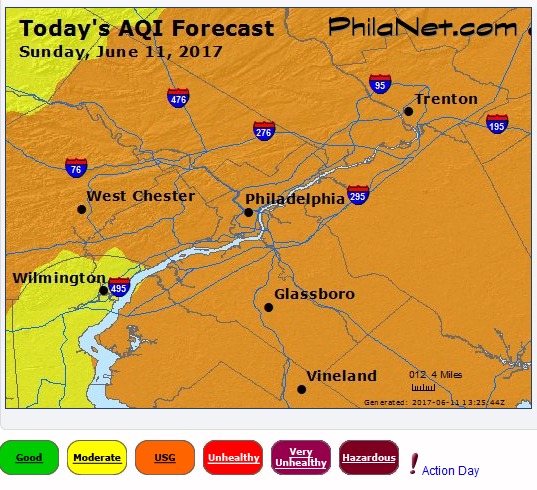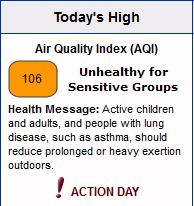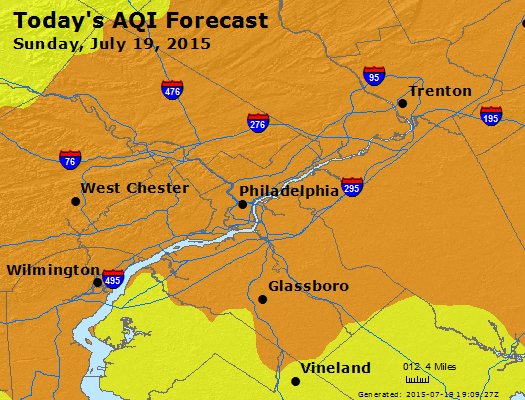Pollen and Increased SARS-CoV-2 Infection Rates
The Proceedings of the National Academy of Sciences of the United States of America published the study Higher airborne pollen concentrations correlated with increased SARS-CoV-2 infection rates, as evidenced from 31 countries across the globe.
The research showed that airborne pollen on average accounts for 44% of the variation in infection rates in addition to humidity and air temperature.
Pollen exposure weakens the immunity by diminishing the antiviral interferon response.
“Our large-scale retrospective data analysis based on 80 individual time series from 130 regions in 31 countries in all inhabited continents across the globe (8,019 data points) enabled us to reveal a robust and significant positive correlation between SARS-CoV-2 infection rates and airborne pollen concentrations, which was halved under lockdown.”
Large portions of the world are susceptible to particulate and ozone pollution. In this study, the focus is on particulate pollution. Though tropospheric ozone pollution is thought to be more detrimental to the respiratory and immune systems, current technology makes it too difficult to measure. Tropospheric ozone and particulate pollution are common in urban and industrial areas. Ozone is created when the ultraviolet light, temperature, and chemicals in the air create a chemical reaction. The result is millions of micro-explosions in the lungs. Hot summer days are optimal for ozone creation. Particulate pollution is a result of fine particles suspended in the atmosphere. Particulate pollution is easier to be aware of because you can see it as haze or smog in the air. Exposure to ozone and particulate pollution results in permanent lung damage and chronic immune system disorders. Exercising in the out-of-doors during days with high pollution amplifies the damage to the respiratory and immune systems. The larger the pollution intake, the more severe the damage.
Exposure to air pollution and COVID-19 mortality
The Harvard study Fine particulate matter and COVID-19 mortality in the United States found, “A small increase in long-term exposure to PM2.5 leads to a large increase in COVID-19 death rate, with the magnitude of increase 20 times that observed for PM2.5 and all-cause mortality. The study results underscore the importance of continuing to enforce existing air pollution regulations to protect human health both during and after the COVID-19 crisis. The data and code are publicly available.” [1]
A study from Oxford found, “Our results suggest that air pollution is an important cofactor increasing the risk of mortality from COVID-19. This provides extra motivation for combining ambitious policies to reduce air pollution with measures to control the transmission of COVID-19.” [2]
“The study estimated that about 15% of deaths worldwide from COVID-19 could be attributed to long-term exposure to air pollution. In Europe the proportion was about 19%, in North America it was 17%, and in East Asia about 27%,” reports the European Society of Cardiology. [3]
Minimize Your Risk
1) Minimize your exposure to air pollution by checking the air quality conditions in your location. (Get air quality data where you live.)
2) People at high risk of COVID mortality due to co-morbidities, such as, aged, obese and type2 diabetics, combined with long term exposure to air pollution should take preventative measures. A deficiency of nicotinamide adenine dinucleotide (NAD+) may be the primary factor related to the SARS-Cov-2 disease spectrum and the risk for mortality, as subclinical nutritional deficiencies may be unmasked by any significant increase in oxidative stress. [4]
The Miller/Wentzel/Richards prophylactic protocol of Niacin B3, Vitamin D, Vitamin C, Quercetin, Zinc, and Selenium can minimize the severity and duration of COVID symptoms and may prevent death.
COVID-19 Emergency Management Plan
1. Fine particulate matter and COVID-19 mortality in the United States Harford
2. Regional and global contributions of air pollution to risk of death from COVID-19 Oxford
3. Study estimates exposure to air pollution increases COVID-19 deaths by 15% worldwide European Society of Cardiology
4. COVID-19: NAD+ deficiency may predispose the aged, obese and type2 diabetics to mortality through its effect on SIRT1 activity Miller, Wentzel, Richards
Additional References:
Pollen and Increased SARS-CoV-2 Infection Rates
https://projects.iq.harvard.edu/…/pm_and_covid_mortality.pdf
https://projects.iq.harvard.edu/files/covid-pm/files/pm_and_covid_mortality_supp.pdf
https://www.medrxiv.org/content/10.1101/2020.04.05.20054502v1
sidd
resources:
The Ozone Know Zone
Air Pollution Kills
Death By Ozone
Killing Ourselves With Climate Change
Health And Air Quality
The Tree Study
The Climate Change Study



